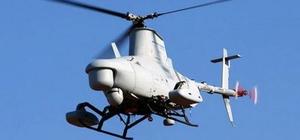Crash of UAV copter with foliage-penetrating radar sheds light on secret program
Two emerging security challenges to the United States — the growing violence of the drug war south of the border, and growing concerns about climate change-driven conflicts in Africa and Asia — have led DARPA to fund the development of technology that will allow U.S. special forces to see through the dense canopy of a jungle; the recent crash, during trials, in the jungle of Belize of a Boeing A160T equipped with foliage-penetrating radar sheds some light on this programs; spokesman of the U.S. Special Operations Command (SOCOM) said more than 90 percent of the objectives of the Belize trials had been met when the crash terminated the effort

A UAV helicopter has been fitted with folaige-penetrating radar // Source: blogspot.com
There are two challenges the United States is facing which require that the U.S. military — especially the special forces — to have the ability to see through the dense canopy of a jungle: the increasingly violent drug war in Mexico (and, more generally, central America) (see “U.S.: Mexico’s drug war posing growing threat to U.S. national security,” 13 September 2010 HSNW), and growing concerns about climate change-driven conflict and instability in Africa and some parts of Asia.
These challenges were brought to mind by the recent crash in the jungles of Belize of a radical, new-technology robot helicopter equipped with a radar intended to penetrate jungle canopies from above. The test were terminated after the crash of the trials aircraft.
Lewis Page writes that the unmanned helicopter which crashed was designated YMQ-18A (the YMQ designation indicates a prototype, multi-mission, unmanned aircraft) by the U.S. Special Operations Command (SOCOM), conducting the trials in Belize. SOCOM is the overall command in charge of all the U.S. various secretive military unites: SEALs, Delta Force, Green Berets, etc. It also runs a sizeable pocket air force devoted to supporting these special forces.
The YMQ-18A, which the U.S. embassy in Belize said crashed at the Central Farm airfield in Cayo, Belize, on 4 September, is another name for Boeing’s A160T unmanned variable-speed-rotor helicopter. The A160T’s variable-speed technology offers much better performance than a normal helicopter the blades of which spin at a fixed rate, simplifying engineering but sacrificing endurance and high-hover capability. The chopper UAV is also said to be significantly quieter than an equivalent normal whirlybird.
Page reported last year on plans for field trials by SOCOM using A160Ts with the FORESTER foliage-penetrating radar, but at the time the exact location of the trials was undisclosed (also see “DARPA’s Foliage-Penetrating Radar Tested on the A160T Hummingbird”). It appears that SOCOM had planned for forty-five days of testing above the jungles of Belize, but the program has now been cut short following the Central Farm crash. In a picture posted online by local media the aircraft and the large belly-mounted radar appear to be completely wrecked.
Page writes that another A160T operated by the regular U.S. Army’s advanced-tech apparatus crashed in July, and another was wrecked in California in 2007. Previous piston-engined versions of the A160 — without the T suffix indicating gas-turbine power — suffered a further three prangs in development.
SOCOM has plans to acquire a small fleet of A160T/YMQ-18As in the coming decade, having ordered ten of them in 2008 and stated that twenty more will be purchased from 2012 to 2017. The special forces units had expected to use the aircraft for surveillance duties lifting FORESTER or Autonomous Real-time Ground Ubiquitous Surveillance — Imaging System (ARGUS-IS) multiplex spyeye systems: also for strike missions armed with guided missiles.
It has also been suggested that the A160T might carry out battlefield supply missions, though it appeared to have lost in a recent contest to a rival “intermesh” aircraft at this task. “It isn’t clear yet whether the Belize crash will cast doubt over the A160T’s future, which at the moment seems largely to rest in the hands of SOCOM,” Page concludes.
Aviation Week reported that SOCOM spokesmen considered that more than 90 percent of the objectives of the Belize trials had been met when the crash terminated the effort.
